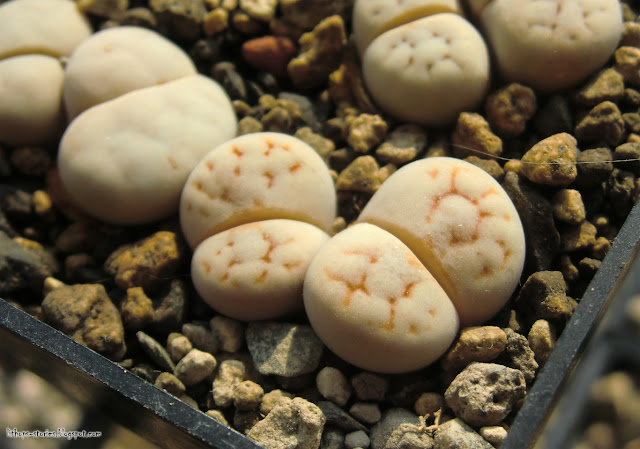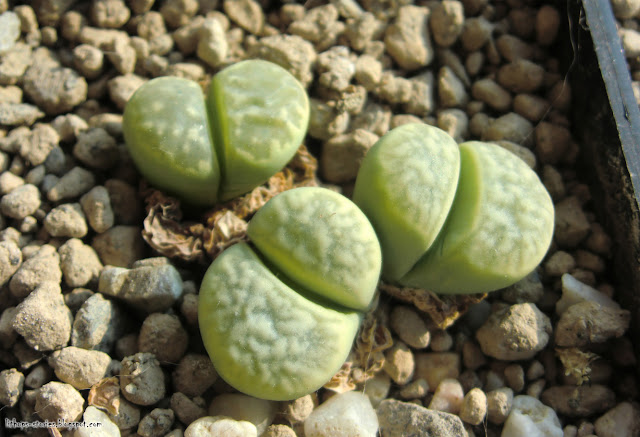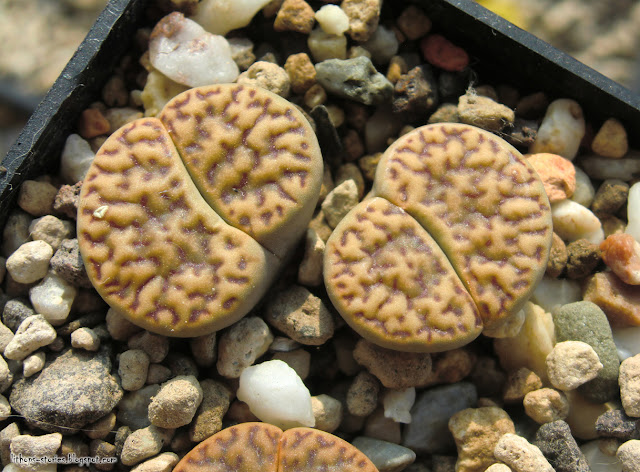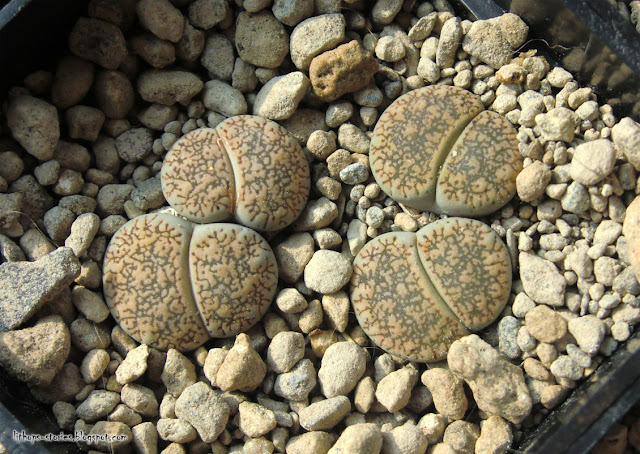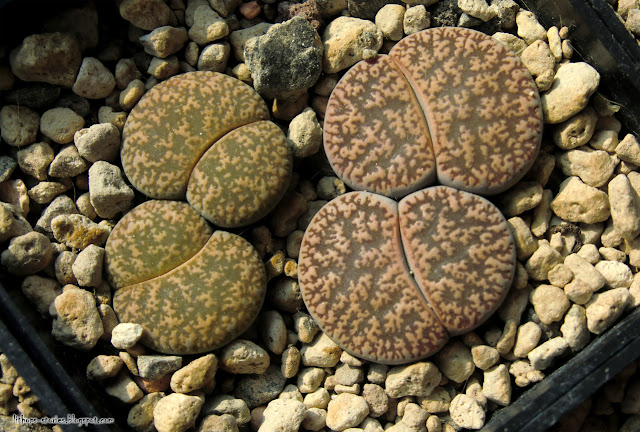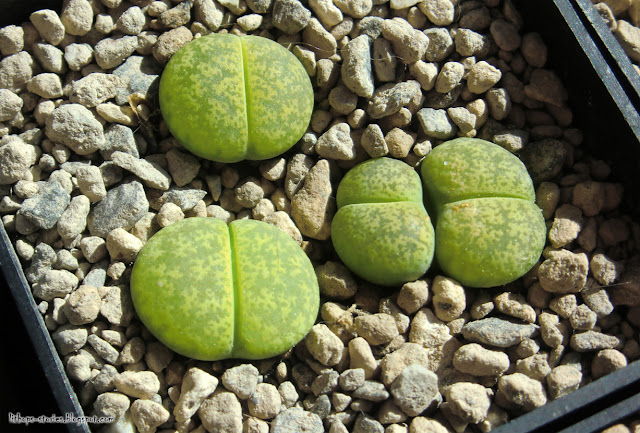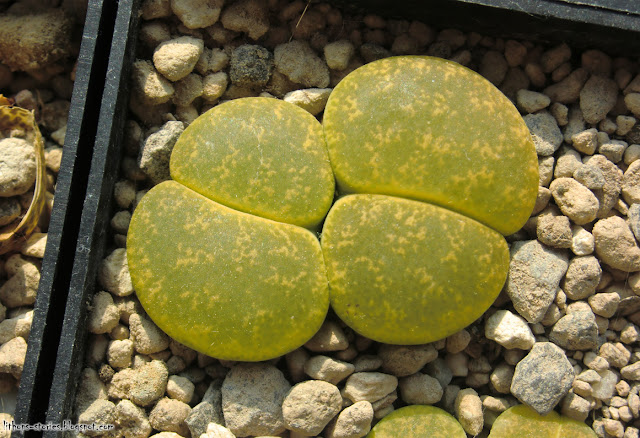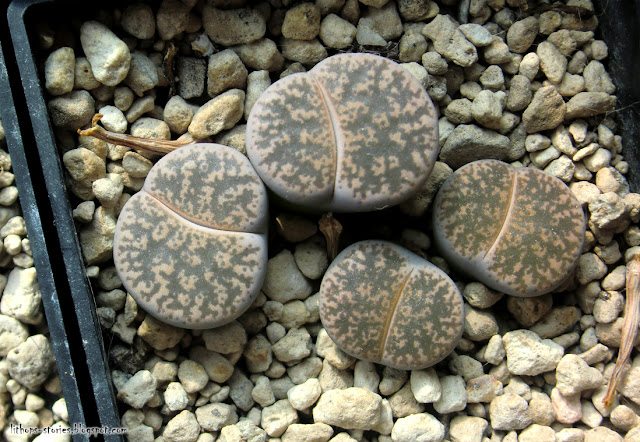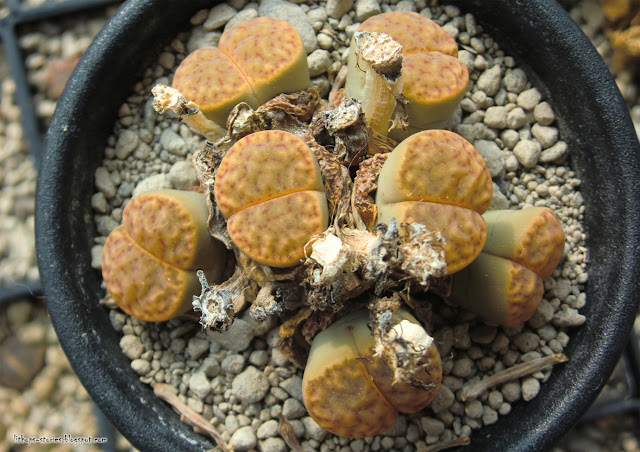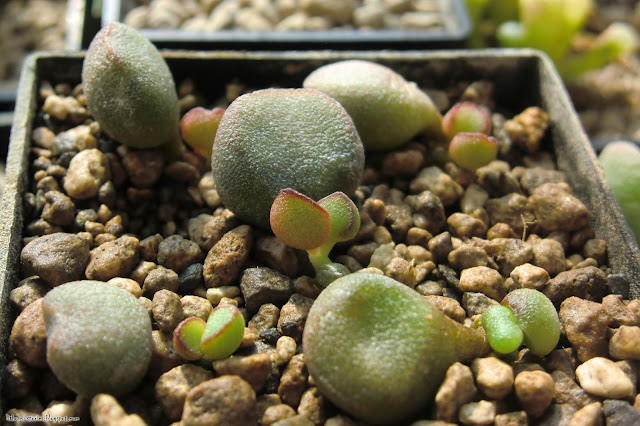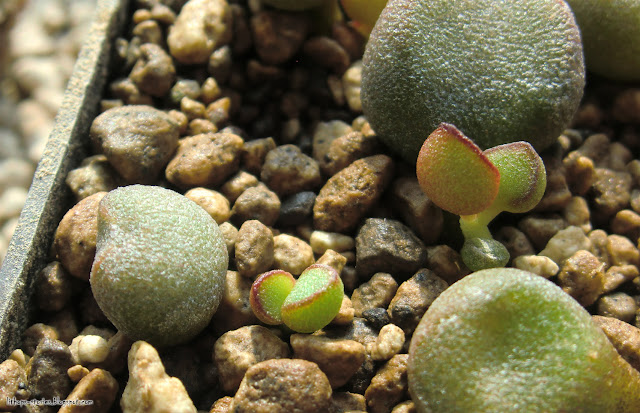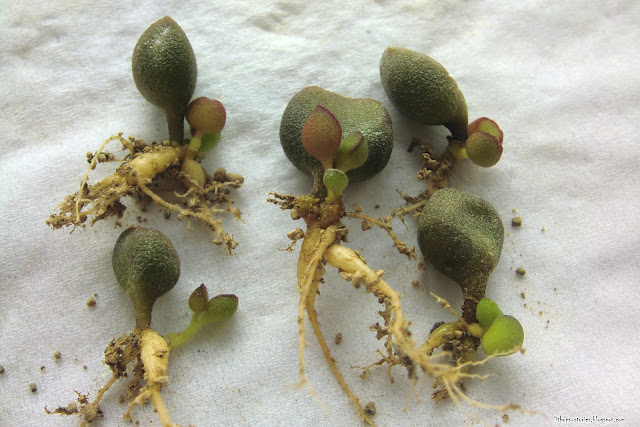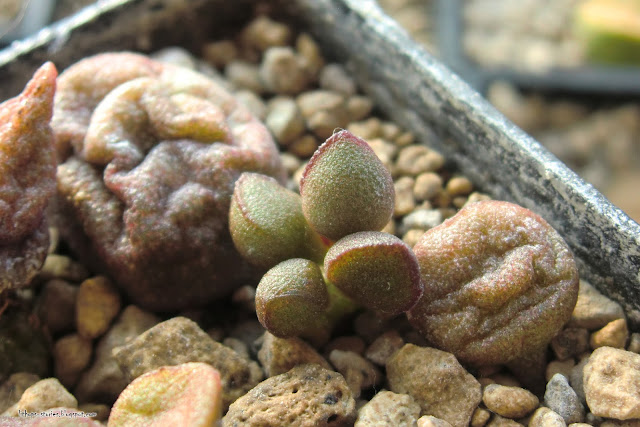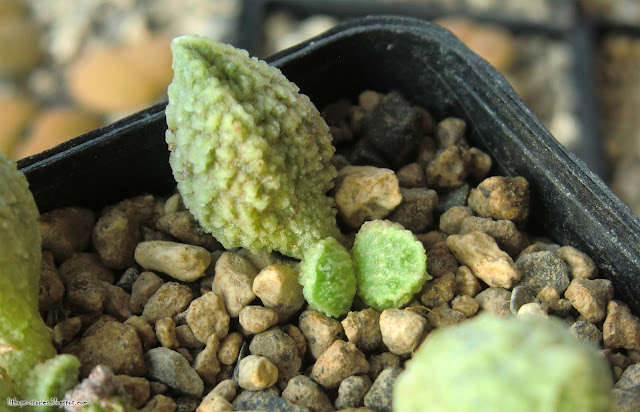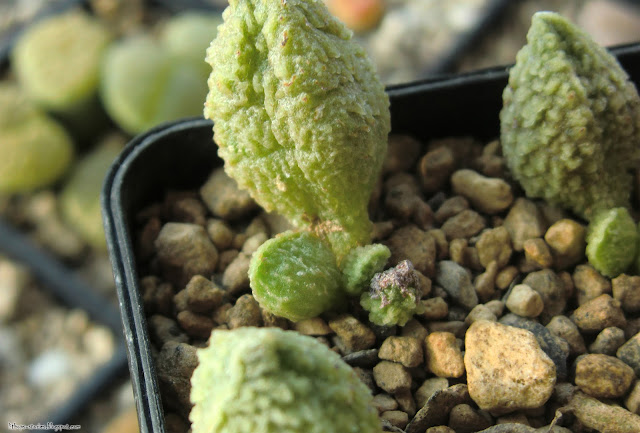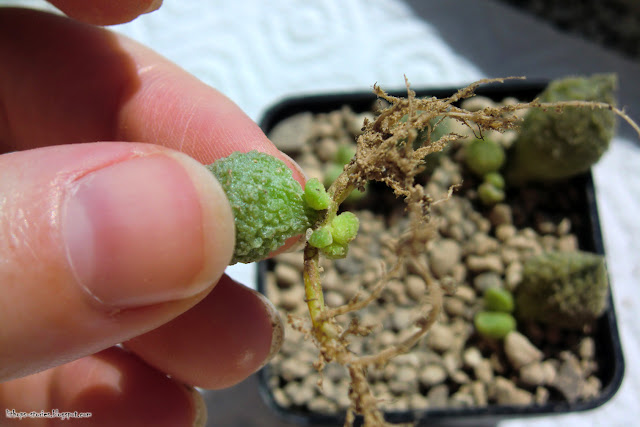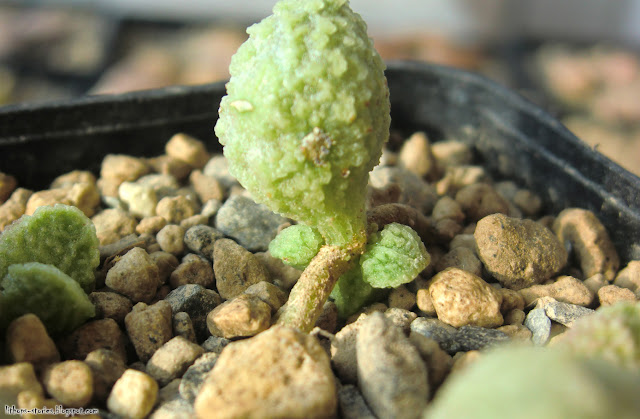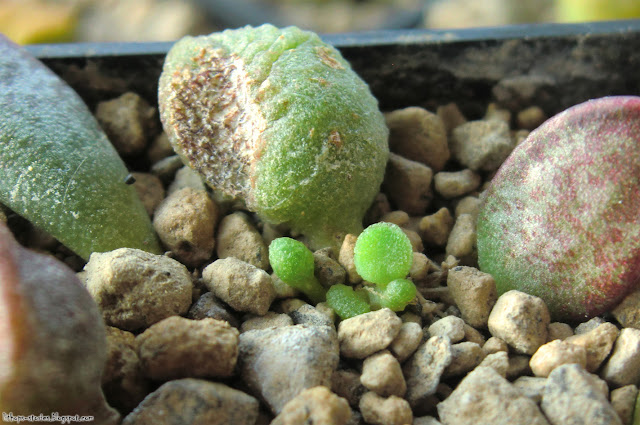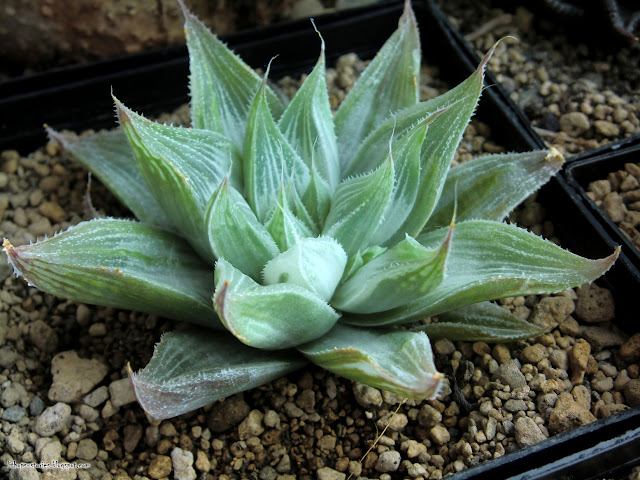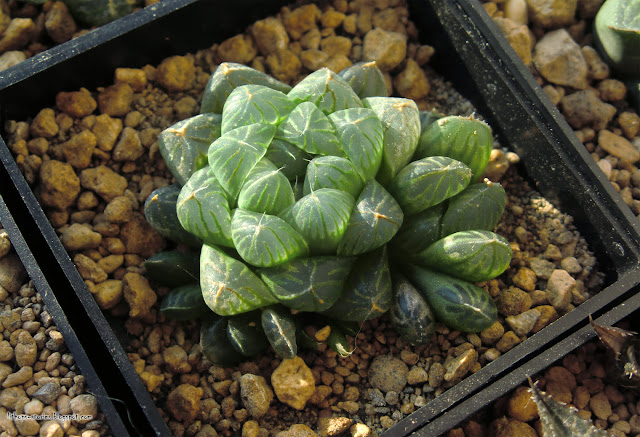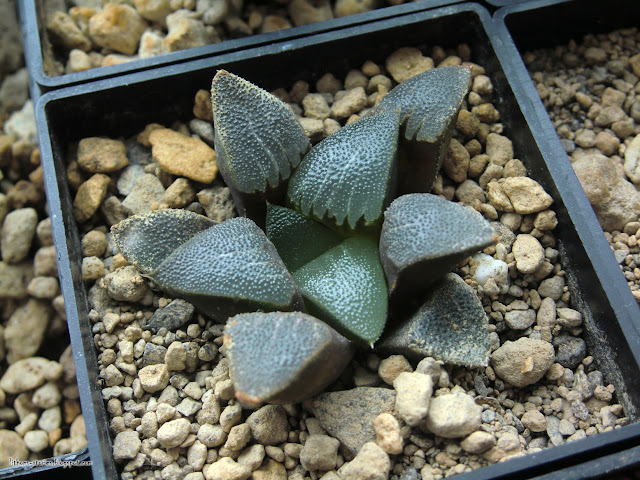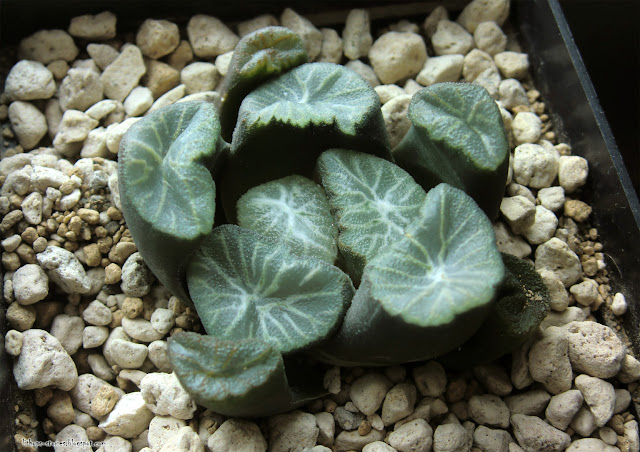These days I have been feeding my three (relatively) new succulent passions. The first one is Anacampseros that was reported on in the last post. The second is Avonia, of which I've recently bought many new plants and will report soon.
The third passion is Adromischus. Although I have several larger species like A. maculatus, cooperi, or cristatus, they neither grow well under my conditions nor are very pretty in general. It's not a surprise that I belong to the majority of people who are into those cute small Adromischus with round heavily textured leaves known as A. marianiae, most of them of the "herrei" variety. Unfortunately those are still very expensive, even the more widespread varieties. It is rarely possible to buy one for less than 20 Euros while some cultivars go for thousands on Ebay. Nevertheless, I'm trying to build some sort of a collection with as many different shapes represented as possible. From what research I've done so far it seems you should not be relying on names much. There are so many hybrids out there! And so many of them look really similar. You just go by their looks and try to get whatever you do not have already represented among your plants. Although I also wouldn't mind getting the same type of plant from different sources in a hope to have genetically different plants and not just clones of the same one. Maybe it would be possible to have them produce seeds this way. Of course you can always try getting hybrid seeds by crossing different types but I'd like to have a possibility to produce seeds with predictable outcome in terms of looks of future seedlings.
FYI, it feels more comfortable to talk about "types". There are too many hybrids, varieties and cultivars these days with all those fancy names it's more confusing than helpful. Also, these plants change their appearance (leaf color and shape) a lot depending on the growing conditions, so that what you see on a picture is not necessarily what it will turn into in your home.
This is the first Adromischus I got back in 2013. It is actually bright green but the older leaves that were turned to the sun are now a bit yellow. Green types are less demanding and seem to grow well under my conditions.
Since then I could grow 3 clones from its leaves that already look like adults. They grow on a sunny spot on my windowsill and the leaves are tight to the stem and nicely round. However, I have noticed that the strong sun seems to bleach them out a bit. The green types get pale after a while.
This most recent leaf cutting was standing in half-shade and is much greener.
If you compare it with another clone, it looks like a different variety. One is bright green with pointy leaves (half-shade), another is pale with round leaves (full sun). They are genetically the same. Maybe I should move all of the green types to a less sunny spot. It might give them a greener color. But do I also want to relinquish the round shape of leaves?
There are two more clones grown from a single leaf but the leaf was not very healthy and dried up too soon. They are very small and look like seedlings.
About the fancy named cultivars, I have troubles telling the green ones apart. For example, the below plant is called "Green Monster" but to me it looks exactly like those above. It's nice to have a genetically different greenie though. In fact, I was not going to allow my old greenies to flower this year but if there is a chance of successful pollination I might reconsider.
Another one is called "Lime Drops" which I can accept as different. Lemony color and pink folded leaf tips. By the way, I got this beautifully grown plant along with several others from Kakteen Plapp nursery which I can really recommend. The plants have not lost any leaves during transport! Newspapers are the best packaging material.
However, "Lime Drops" cuttings I got from another seller look just like my old greenies. No complaints here. My collection is so small that I'm glad to get any kind of A. marianiae plants (or leaf cuttings).
This plant was offered on ebay under the name of "Little Spheroid" which was doubtful. I got it anyway because I didn't have this type of texture and color among mine yet. Where is the plant, you ask? Well, due to bad packaging it arrived completely disassembled.
To be continued...
FYI, it feels more comfortable to talk about "types". There are too many hybrids, varieties and cultivars these days with all those fancy names it's more confusing than helpful. Also, these plants change their appearance (leaf color and shape) a lot depending on the growing conditions, so that what you see on a picture is not necessarily what it will turn into in your home.
This is the first Adromischus I got back in 2013. It is actually bright green but the older leaves that were turned to the sun are now a bit yellow. Green types are less demanding and seem to grow well under my conditions.
Since then I could grow 3 clones from its leaves that already look like adults. They grow on a sunny spot on my windowsill and the leaves are tight to the stem and nicely round. However, I have noticed that the strong sun seems to bleach them out a bit. The green types get pale after a while.
This most recent leaf cutting was standing in half-shade and is much greener.
If you compare it with another clone, it looks like a different variety. One is bright green with pointy leaves (half-shade), another is pale with round leaves (full sun). They are genetically the same. Maybe I should move all of the green types to a less sunny spot. It might give them a greener color. But do I also want to relinquish the round shape of leaves?
There are two more clones grown from a single leaf but the leaf was not very healthy and dried up too soon. They are very small and look like seedlings.
About the fancy named cultivars, I have troubles telling the green ones apart. For example, the below plant is called "Green Monster" but to me it looks exactly like those above. It's nice to have a genetically different greenie though. In fact, I was not going to allow my old greenies to flower this year but if there is a chance of successful pollination I might reconsider.
Another one is called "Lime Drops" which I can accept as different. Lemony color and pink folded leaf tips. By the way, I got this beautifully grown plant along with several others from Kakteen Plapp nursery which I can really recommend. The plants have not lost any leaves during transport! Newspapers are the best packaging material.
However, "Lime Drops" cuttings I got from another seller look just like my old greenies. No complaints here. My collection is so small that I'm glad to get any kind of A. marianiae plants (or leaf cuttings).
This plant was offered on ebay under the name of "Little Spheroid" which was doubtful. I got it anyway because I didn't have this type of texture and color among mine yet. Where is the plant, you ask? Well, due to bad packaging it arrived completely disassembled.
To be continued...
















































